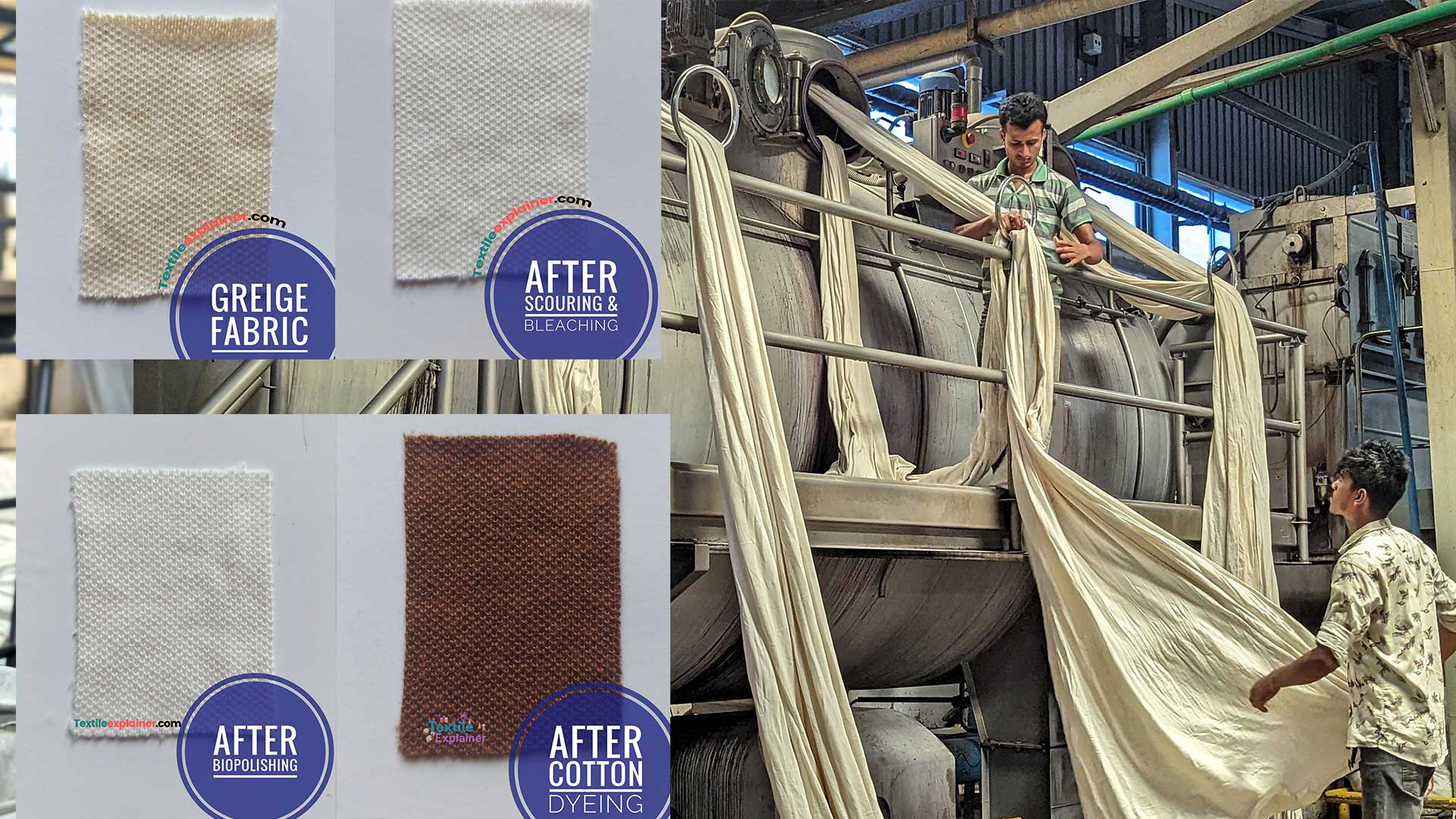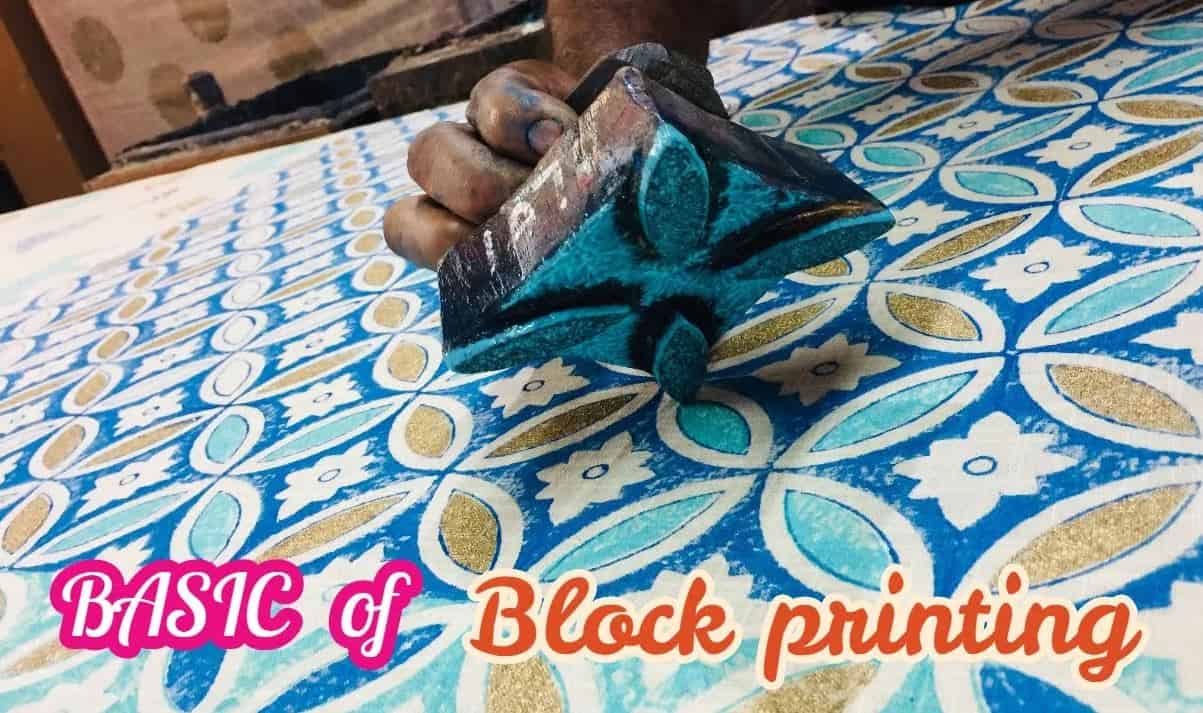Cold Pad Batch (CPB) Dyeing:
The cold pad batch (CPB) dyeing process is a continuous (semi) process and efficient dyeing method. The cold pad batch (CPB) dyeing technique actively dyes cellulosic fibers like cotton, viscose, and their blends. Operating continuously at room temperature or slightly elevated temperatures, this method eliminates the need for high temperatures or pressure. Notably, CPB dyeing reduces energy and water consumption compared to traditional dyeing methods, making it an environmentally friendly alternative.

Cold Pad Batch (CPB) Dyeing
Typical Recipe For cold Pad Batch (CPB) Dyeing:
| Dyestuff | 3% |
| Salt | 60 gm/l |
| Soda Ash | 15 gm/l |
| Urea | 150 gm/l |
| Sodium(Na) alginate | Approximate amount |
Process Sequence For cold Pad Batch (CPB) Dyeing:

1. Pretreatment:
Initially, the fabric actively undergoes a pretreatment process, incorporating de-sizing, scouring, and bleaching. This process effectively eliminates impurities, oils, and any sizing agents that may reside on the surface. This guarantees improved dye penetration and ensures uniform dyeing throughout the fabric.

Image: Fabric Pretreatment Process Before Dyeing
2. Preparation of Dye Bath:
Preparing the dye bath involves actively dissolving the dye and essential chemicals (such as salt, alkali, and dyeing auxiliaries) in water. These chemicals play a crucial role in enhancing dye absorption, ensuring leveling, and facilitating fixation. This method predominantly operates at low temperatures, ranging from 20-25°C, and employs Cold to Medium Brand Reactive Dyes.

Image: Preparation of Dye Bath
3. Padding:
The textile material actively passes through the prepared dye bath in a continuous manner, facilitated by a padding machine. This machine actively ensures the even and uniform saturation of the fabric with the dye solution. The padder efficiently impels the dyestuff into the fabric, simultaneously eliminating excess dye solution in this stage.

Fig: Cold Pad Batch (CPB) Dyeing Method
4. Batch Formation:
Following saturation, the dye-imbued fabric is actively rolled into a batch and meticulously covered with a protective film like polyethylene sheet or wrapping. This precautionary measure prevents drying and preserves a consistently controlled dyeing environment, highlighting the crucial “batch” aspect of the process.
5. Aging:
Once wrapped, the fabric undergoes a specific period of “aging.” During this time, dye molecules actively migrate and diffuse into the fibers through capillary action, ensuring thorough dye penetration. Aging can take several hours (1-24 hours) at room temperature to allow for effective dye migration and fixation.

Aging Process of Cold Pad Batch (CPB) Dyeing
6. Washing and Finishing:
Upon completion of the aging period, the fabric undergoes unwrapping. The next step involves actively removing excess dye through washing to eliminate any unfixed dye from the surface. Following this, the fabric undergoes a drying process, and any necessary finishing steps are implemented.

application of cold pad batch (CPB) Dyeing:
The cold pad batch dyeing technique actively dyes cellulose fibers. Transitioning to the fabrics applicable for CPB dyeing include:
- 100% Cotton.
- Linen.
- Cotton + Spandex.
- Linen Cotton Blend.
- Linen Viscose Blend.
- Cotton Viscose Blend.
- 100% Viscose.
Advantages of Cold Pad Batch Dyeing:
1. Enhancing energy and water efficiency:
CPB dyeing actively eliminates the requirement for high temperatures, leading to energy savings and a decrease in water consumption when compared to traditional dyeing methods.
2. Reducing environmental impact:
CPB dyeing actively employs lower temperatures and fewer chemicals, often leading to decreased pollution and environmental harm.
3. Maximizing dye utilization:
The gradual migration and diffusion of dye molecules during the aging phase actively contribute to achieving higher dye utilization and improved color fastness.
4. Mitigating fabric damage:
The absence of high temperatures and pressure actively diminishes the risk of harm to the fabric. This characteristic makes CPB dyeing particularly suitable for delicate and heat-sensitive fibers.
limitations of Cold Pad Batch Dyeing:
1. Variable Suitability:
It’s crucial to acknowledge that CPB dyeing may not be universally suitable for all types of fibers and dyes.
2. Migration Challenges:
Some dyes may exhibit suboptimal migration properties at low temperatures, limiting their effectiveness in CPB dyeing.
3. Ineffective Dye Absorption:
Certain fibers might not actively absorb dyes through this process, reducing the efficacy of CPB dyeing for those specific materials.
4. Extended Processing Times:
The longer processing times required for aging can pose a limitation in terms of production speed, affecting the overall efficiency of the CPB dyeing method.
In summary, CPB dyeing serves as a valuable alternative to traditional dyeing methods, particularly when environmental considerations and cost-efficiency weigh heavily in decision-making.
Reference:
- Cellulosics Dyeing Edited By John Shore
- Basic Principles Of Textile Coloration – Arthur D. Broadbent
- Textile Preparation and Dyeing by A K Roy Choudhury
- Dyeing and Chemical Technology of Textile Fibers by E.R. Trotman
- Chemistry of dyes and principles of dyeing by Shenai V.A.
To learn more on different dyes chemical and dyeing applications you can check on the following article:













2 thoughts on “Cold Pad Batch (CPB) dyeing process”
Such a important article sir. Thanks for sharing sir 💞💞💞
Thanks for the compliment Abed.